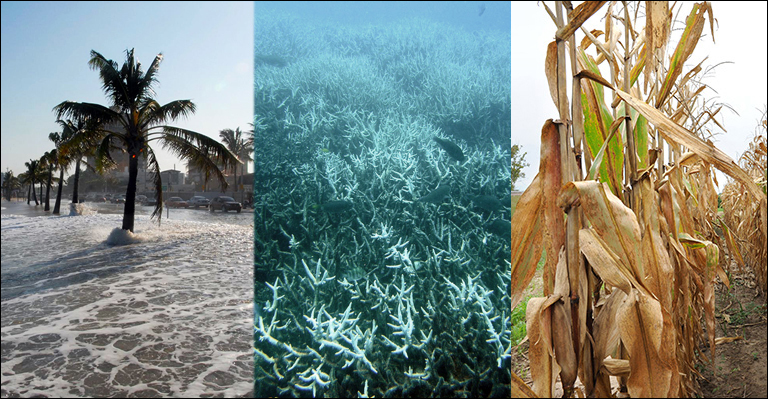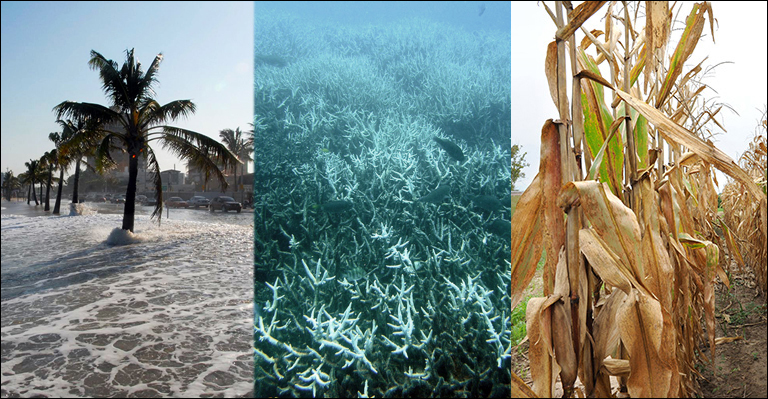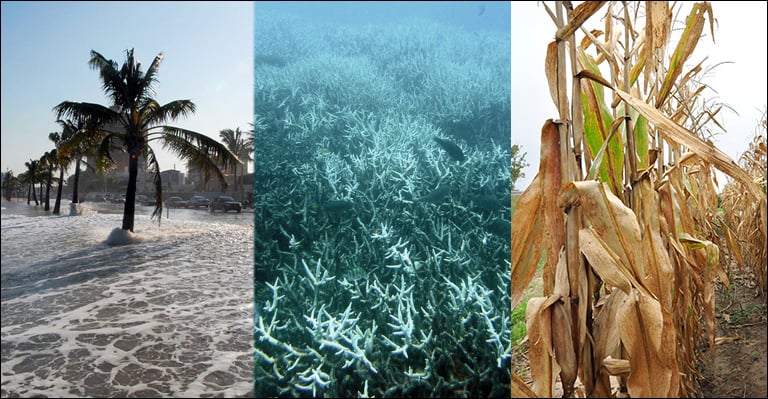


Climate displacement is becoming one of the world’s most powerful and destabilizing geopolitical forces. The UN estimates that there are 13.5 million refugees requiring humanitarian assistance. Climate change will destabilize borders and increase humanitarian crises.
A global temperature rise to 2C above pre-industrial levels could see many regions facing an increased threat of drought and wildfires, study suggests , more than a quarter of the planet’s surface could become significantly drier if global temperatures rise 2C above pre-industrial levels, scientists predict.
Staying below 1.5 is achievable and necessary; we need to transition to 100% Renewable Energy and Natural Climate Solutions to tackle Climate Change.
Climate change is a hot topic. In the aftermath of the US withdrawal from the Paris Agreement, cities and states have vowed to step up. It is also time for other nations to step up on climate commitments. Both, a complete phase-out of coal-based power and a massive scale-up of renewables by 2050 are required. With moving away from fossil fuels and investing renewables, countries are not only doing what is right for the climate; they are also making a smart investment.
The Paris climate agreement saw countries pledge to limit global warming to well below 2℃, and to aim to keep it within 1.5℃. The problem is that countries’ current emissions targets are not enough to meet these goals.
The agreement requires that developed nations – as defined by the UN Framework in 1992 - will continue to help developing countries with the costs of going green, and the costs of coping with the effects of climate change.
Climate change has very uneven consequences. Developing countries, the least responsible for climate change, are the ones bearing the brunt of the climate crises. Developed nations are the ones with the greatest responsibility to act.
Although climate change is a global issue, part of the solutions lie in sustained collaborative action at all levels: the international, national and local levels.
The thorny question of how much money rich nations must give only appears in a non-legally binding 'decision text' accompanying the Paris Agreement.
Currently, developed countries are obliged to 'mobilise' $100bn a year of public and private finance to help developing countries by 2020 – a target set in Copenhagen in 2009.
Africa is already experiencing adverse climate conditions such as persistent droughts and flooding, off season rains and dry spells have disrupted growing seasons. Alarm bells are ringing with lakes drying up and a reduction in river flow in the arid and semi-arid region resulting in fewer water supplies for use in agriculture, hydro power generation and other uses.
The striking shift to 1.5 degrees is an acknowledgment that a mere half degree of extra warming could mean profound changes for the planet. The latest science shows that a mere half degree of extra warming between now and the end of the century could mean profound changes for the planet and many of its inhabitants.
Indigenous peoples are the most vulnerable to climate change as warming temperatures have impacts in their culture, traditions and health. For centuries, Africa has maintained a close relationship with nature, however unpredictable weather patterns have increased the risk of traveling on the land and some traditional routes are now unreachable. There are also increased incidences of waterborne diseases resulting from rapid wastes and heavy rainfalls. From droughts in the East Africa region, to unusually heavy rains pre-monsoon season in Bangladesh, the climate change impacts on people, economies and environments around the world will also have repercussions for Africa.
We should continue to put pressure and pursue efforts to limit the temperature increase to 1.5 degrees, which is considered to be the most ambitious temperature target still technically achievable.
In order to actually limit warming to that level, countries should aim to achieve a balance between anthropogenic emissions by sources and removals by sinks of greenhouse gases in the second half of this century – in other words, net carbon emissions to be zero.
To get there, countries should aim to reach global peaking of greenhouse gas emissions as soon as possible, recognizing that peaking will take longer for developing country parties, and to undertake rapid reductions thereafter in accordance with best available science.
The speed of the current climate change is faster than most of the past events as a result of developments thus making it more difficult for human societies and the natural world to adapt. We might not be able to correct the climate condition but we can prevent it from getting worst. Many recent scientific research and publications in 2016 had examined the impact of a 1.5 degree Celsius vs. a 2.0 C temperature increase by the end of the century. It found that the skip from 1.5 to 2 degrees raises the impact by about one third of the phenomena studied. Heat waves would last around a third longer or rain storms would be about a third more intense. Also, the increase in sea level would be approximately a third higher and so staying below 1.5 degrees also limits risks of reductions of yields in crops such as wheat, cocoa and potatoes in key developing regions by 10-15%.
We need to keep in mind that drought is going to increase food insecurity, and new insect pests could create all kinds of problems and health issues. And then you start thinking: What’s going to happen when people start getting displaced as a consequence of climate change.
The effects of climate change will continue to grow and scale as temperature increases in Africa and in the rest of the world. The closer we stay within the 1.5 degrees Celsius goal, the less challenging it will be to adapt and to mitigate. In order to keep earth’s climate from moving into unchartered and more unpredictable scenarios, action is also needed from municipalities, businesses, people and organizations.
Reducing our reliance on fossil fuels and investing in renewable energy therefore stays the most critical strategy to decreasing emissions in the long term. With high enough ambition, a transition to a sustainable energy system is achievable without having to rely on geoengineering.
People, communities and institutions can all step up to take action. Be it through putting up solar panels to generate your own electricity at home, or by composting, recycling and reducing waste in order to cut down methane emissions, we are all part of the solution. Protecting and restoring our forests, wetlands and peat lands, as well as making our agricultural land-use more sustainable, help to reduce emissions and increase climate resilience.
Popular Post
Featured
Climate Change
